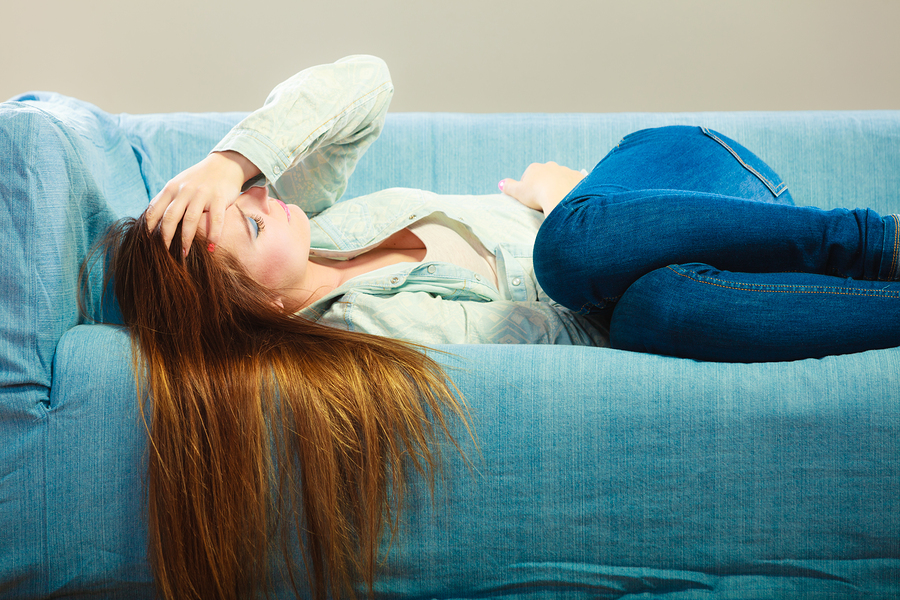- Make It Yourself Lavender Heart-Shaped Bath Bombs!
- 20 Things You Never Knew About “Down There”
- 12 Best Foods For Those Suffering From Arthritis Pain
- 12 Personal Hygiene Mistakes Almost Everyone Makes (Mom Never Told You About #4!)
- 15 Medicinal Plants And Herbs From The Cherokee People
- 12 Mind-Blowing Benefits Of Drinking Coconut Water During Pregnancy
- 12 Outstanding Winter Foods That Won’t Fatten You Up Like A Christmas Turkey
This One Thing Is Surprisingly So Common!

Photo credit: bigstock.com
Have you ever suffered from a panic attack or an anxiety attack? Even if you haven’t, you have surely felt anxiety at some time or another in your life. With about 13 million adults suffering from feelings of anxiety during the past year, this is becoming more prevalent than ever. In fact, with the number reported cases of anxiety alone in the past year, this type of feeling is eclipsing all forms of cancer combined by about 800 percent!
Is it any wonder that we are feeling anxious? Our modern day life is one constant hassle! Everything from getting up early so we can hope to beat traffic; our commute; the jobs we hold which demand far too much for far too little; trying to work in exercise and relaxation time; the kids, our spouses; and the constant demands from cell phones, fax machines, computers. The gadgets made our lives easier, but now demand that we be available at all times and ready to work at a moment’s notice. We have poor diets which do not allow our bodies to deal with this stress, and then we get messages from mainstream media suggesting that not only should we have it all and do it all, but we better look good doing it!
Although employers are urged to be sensitive to employees who might be experiencing anxiety, the truth is most of them simply don’t care even though the accommodations needed are easy and inexpensive. If employers were to offer more flexible work schedules, tele-commuting when possible, and more private work spaces, or encourage solutions to common problems such as on-site child care and after work yoga or exercise sessions, perhaps anxiety levels in America would drop and productivity would increase.
Unfortunately, anxiety is even common among college students. The Center for Collegiate Mental Health at Penn State found that more than 50 percent of those visiting on campus clinics reported having feelings of anxiety or anxiety attacks. In fact, one national survey found that just in the past year, one out of every six college students was treated for anxiety.
The fuel for the fire of anxiety is uncertainty. Taking a more lighthearted approach to things can help. We can’t help it — as human beings, we prefer certainty to uncertainty. For example, studies have shown that, offered the choice of receiving an electrical shock right now as opposed to “later” (no definite date given), people overwhelmingly preferred to be shocked right now, therefore eliminating the uncertainty.
The main area where people differ in the degree to which uncertainty bothers them is age. A team of researchers in Quebec developed a scale called the Intolerance of Uncertainty Scale, or the IUS. This scale looks at and assesses how much people desire and seek out the certain, the predictable, and the ways they react in ambiguous situations.
Higher levels of intolerance are predictive of an increased risk of developing anxiety attacks or other kinds of anxiety disorders, such as OCD (obsessive compulsive disorder).
In fact, for anxiety to exist, there must be a certain degree of uncertainty, according to research performed at the University of Wisconsin Madison’s Center for Investigating Healthy Minds.
According to one of the creators of the IUS, those who suffer from GAD (generalized anxiety disorder) are on one end of this scale of worry. Their worries aren’t different than yours or anyone else’s, they just have a whole lot more of it. Think of it as a type of psychological allergy.
There are a great many brain processes in anxiety including the regulation of emotions and the perceived threat or safety detection. When an uncertain situation occurs, your brain looks for environmental clues, such as past experiences, so that it can associate this as a safe event or a threatening event. When you are in a unique situation that you have never experienced before and you don’t know anything about it, your brain takes the “better safe than sorry” approach and sees everything as a threat.
Continue to Page 2

Photo credit: bigstock.com
This has a terribly negative effect on your health since your body sees anxiety the same way it sees fear; it evokes that “fight/flight/freeze” emotion as a means of protection. This triggers stress hormones that help you respond in an emergency. When the brain sees an uncertain situation that it cannot determine, the anxiety prone person responds by either fighting it or avoiding it. Most people choose avoiding it and when anxiety prone people are in this “avoidance mode”, they tend to tell others what to do, no matter how ridiculous, no matter how inappropriate this might be.
Think you are stuck being an anxiety-prone person? Do you feel stuck in that “avoidance” mode? There is a third option.
Practice one of the following three strategic options to ease feelings of anxiety.
1. Emotional Freedom Technique
Although no one can remove all anxiety from their lives, there are energy psychology tolls that help you address your anxiety and panic attacks. This one is called the Emotional Freedom Technique, or EFT. This works by correcting the bioelectrical short circuit that happens when anxiety becomes chronic. Chronic anxiety can cause you to constantly look for potential threats in everything, no matter how mundane the situation, no matter how safe this situation was to you in the past, your brain becomes hardwired to look for the bad.
2. Learn to Manage It
If you think your anxiety isn’t “that bad,” you can try to find ways to deal with your anxiety attacks or OCD behavior as it occurs. The idea here is to experience some level of uncertainty and realize that you can live with it. It might not be fun or pleasant, but you learn that you can live through the situation. For example, if you check your stock market accounts three or more times each day, worried that some drop in the market is going to negatively affect you, you might try to limit yourself by looking just twice each day, for beginners. Then just once each day. Then every other day. This gradual acceptance and change teaches your brain that looking at your stocks every other day is just fine; there is no threat and nothing horrible happened.
3. Practice Meditation
This sounds too simple to work, but it does. Mindfulness, in particular, appears to help people who suffer from GAD. This is a practice of single-tasking. Focusing solely on one task. You don’t want to think about all those “what ifs” that cause so many people to feel anxiety. You know, the “What if I do this wrong? What if I don’t finish on time? What if the boss doesn’t like this? What if I am late? What if I run out of gas, wreck the car, end up in the hospital, who is going to take care of my kids and how am I going to pay the bills and what if the other party doesn’t have insurance?” You get the idea here. Mindfulness, looking just at what you are doing right now, works because there is really nothing uncertain in the RIGHT NOW, correct? You know what you are doing, you know where you are going, and that’s it. This can help to reduce anxiety but takes some practice to master. One study found that anxiety prone people who took part in mindful mediation were able to shrink that part of the brain which is responsible for feelings of anxiety.
READ ALSO: The Real Causes Behind Depression And Other Mood Disorders
If you practice some of these steps but find that you simply cannot control your feelings of anxiety, see your doctor or a therapist to find the deeper root of your problem.
References:
Video: www.youtube.com
































